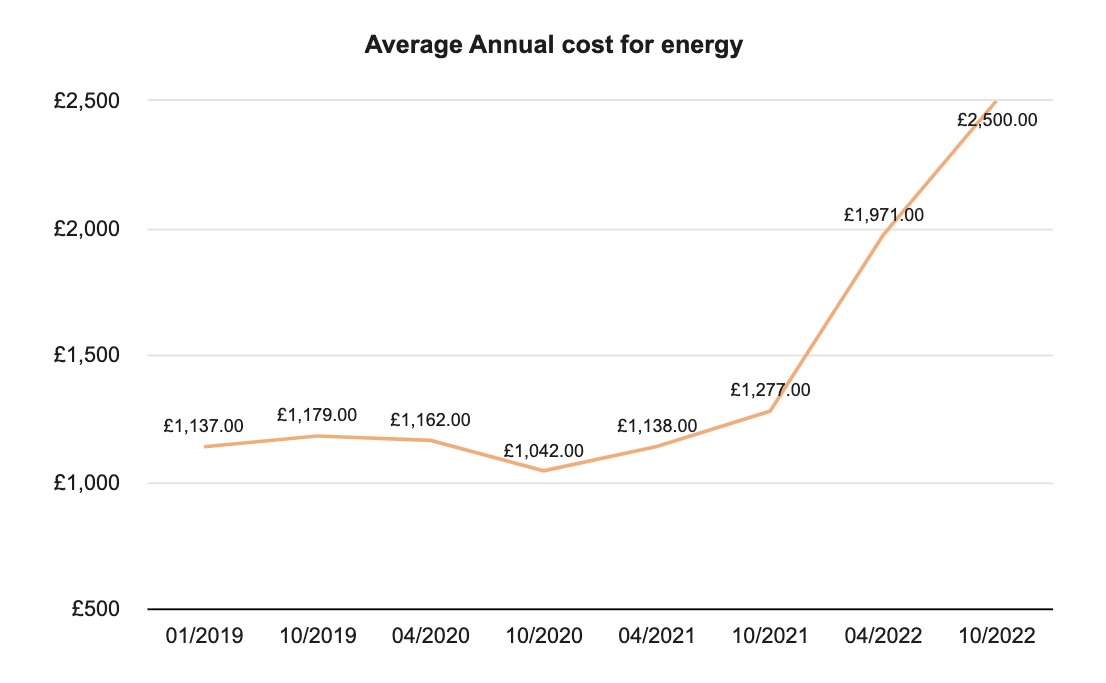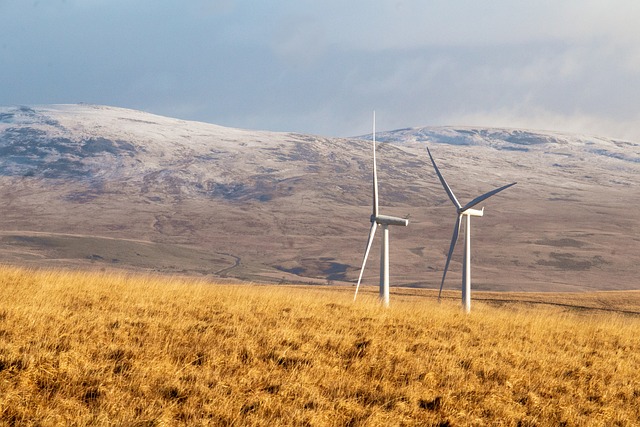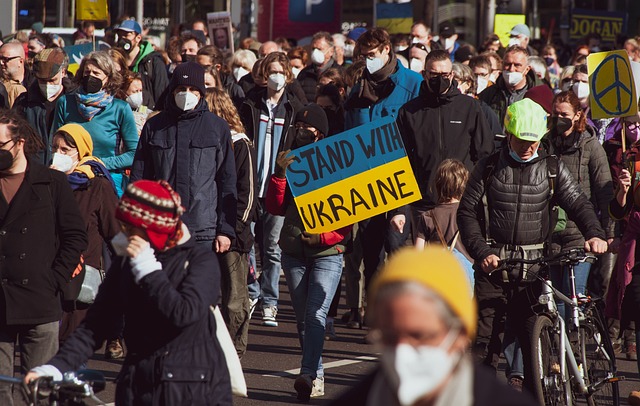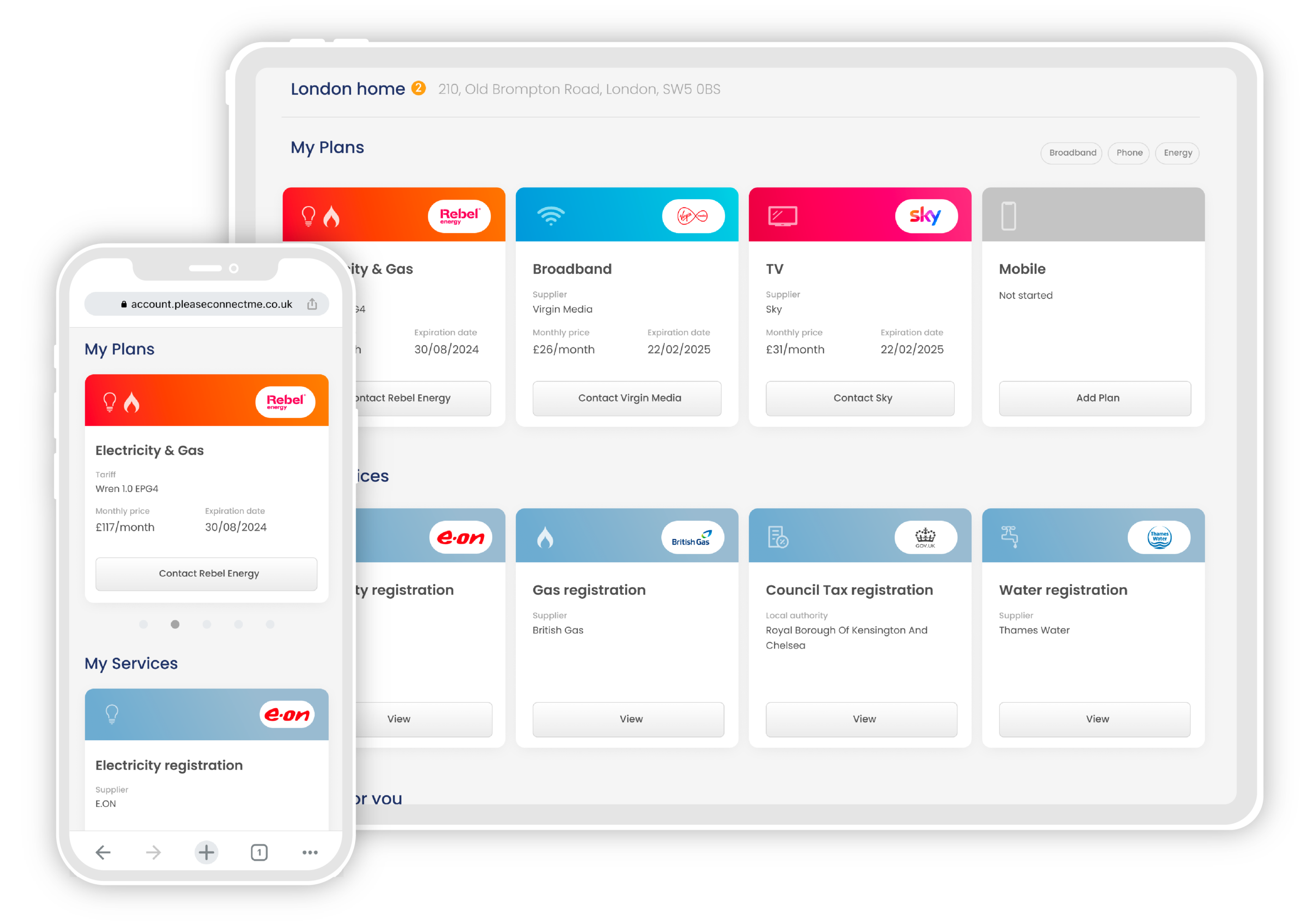What’s happened to the UK energy market?
Since 2021, we’ve been told we’re in the throes of an energy crisis. We’ve seen the price cap on standard variable tariffs go from an upper limit keeping the most expensive tariffs in check to the lowest cost option for domestic energy. The cost of energy skyrocketed. And, since November 2016, 49 UK energy companies have imploded, shuffling their customers to new suppliers or, in the case of Bulb energy, entering special administration.

Looking back, it’s easy to see some key events still being felt in the UK energy market today. What also becomes apparent as we look over the timeline of events is how many different factors came together in making the energy crisis as we see it today.
Moving in or to the UK? Please Connect Me set up all of your utilities for free – book a call today!
The UK energy market 2019 – 2022
2019
January 2019
Ofgem’s first energy price cap is introduced, with average annual bills set to £1,137. The price cap is designed to limit the per-unit costs of the – at the time – more expensive standard variable tariffs. As the energy crisis went on, these price caps went from upper limits on the most expensive tariffs to the best value option available by some margin. As of January 2023, these standard variable tariffs protected by the price guarantee are the best value tariffs available.
October 2019
Energy price cap adjusted, average annual bills set to £1,179
2020
31st January 2020
The UK leaves the EU. While the impact on the UK energy market would not be immediately obvious, over the next three years it will become apparent the advantages that being a part of the European Union gave us when trading energy.
March 2020
The UK Covid-19 lockdown begins. Lockdown would bring about fundamental shifts in the energy market, including a massive drop in industrial consumption and a shift towards higher levels of domestic and off-peak consumption. As we returned to the workplace some of these changes reversed, but domestic use is still much higher than it was pre-pandemic.
April 2020
Ofgem change their figures for calculating average usage, the energy price cap fell to £1162 under the new calculations.
October 2020
Energy price cap adjusted, average annual bills set to £1042
2021
April 2021
Energy price cap adjusted, average annual bills set to £1138.

Low wind levels left the UK’s 11,500 turbines unable to generate electricity throughout the summer
August 2021
The lowest wind levels on record since 1961. Wind is one of the UK’s major sources of renewable electricity, and low wind levels place strain on stockpiled fuel.
15th September 2021
Fire at the IFA1 high voltage power cable. The cable, which carried electricity from France into a connector station in Kent, is now not expected to be fully operational until October 2023.
October 2021
Energy price cap adjusted, average annual bills set to £1277
November 2021
Bulb Energy cease operations. With 1.7 million customers at the time, they’re the largest of the 29 energy companies that closed between January 2021 and January 2022. Bulb are placed in special administration as no existing energy company is willing to take on their customer base. Octopus Energy will eventually do so in late 2022.
2022
24th February 2022
The Russian invasion of Ukraine begins officially. The wholesale price of gas reaches £8.00 per therm two weeks later – a 1700% increase on the 45p per therm price the same time the previous year. Prior to the invasion, Russia supplied 40% of the EU’s natural gas.

The Russian invasion of the Ukraine has had a knock on effect on energy supplies across Europe
April 2022
Energy price cap adjusted, average annual bills set to £1971.
April 2022
UK households receive a £150 council tax rebate to help with the rising cost of living
May 2022
Then Chancellor, now Prime Minister, Rishi Sunak announces households will receive an additional £400 in bill support this winter.
Autumn 2022
The warm home discount scheme is streamlined. Qualifying households will now receive their payments automatically, rather than having to apply.
October 2022
Energy price cap was adjusted, with average annual bills set to £2500. The proposed figure in August was £3549, but this was brought down after the introduction of the Energy Price Guarantee by Liz Truss. The £2500 price cap was initially intended to stay in place for two years. It would have ended in October 2024, when the government would have reviewed the price cap to reflect new energy costs. Instead, the scheme will now end in April 2023.
October 2022
The first of 6 energy support payments are made to UK households. The monthly payments of £66 or £67 are sent directly to some customer’s bank accounts while others receive them in the form of bill credit.
2023
What will 2023 mean for the UK energy market? We’ve already been warned to expect a rise in domestic energy prices when the current energy price guarantee ends this spring. Currently, Chancellor Jeremy Hunt expects the average household will pay £3000 a year for energy from April. On the other hand, signs are hopeful that we may see a return of competitive energy tariffs, giving customers better options than the maximum allowed by the price cap.
If you want to stay up to date on all things energy and utilities, subscribe to our mailing list or follow us on Instagram, Twitter or Facebook for regular updates and explainers.
Read more about energy in the UK:













